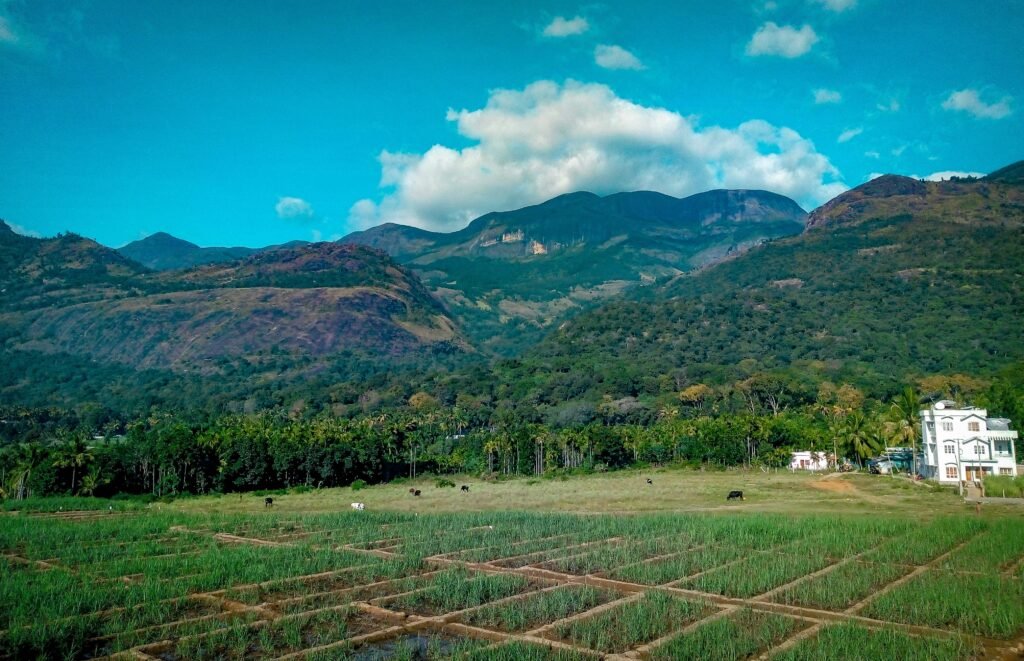🍅 Introduction
Tomato farming in India is one of the most profitable vegetable farming options for small and medium farmers. With a short crop cycle, high demand, and strong market value, tomatoes offer excellent returns if grown scientifically.
This blog explains how to start a successful tomato farming business in India, covering climate, soil, seed selection, crop care, pest control, and marketing tips for maximum yield and income.
🌍 Why Tomato Farming is Profitable in India
High demand across India, all seasons
Short duration crop (60–90 days)
Suitable for open fields & polyhouse farming
High tomato yield per acre with hybrid seeds
Government subsidies for vegetable farming

🧭 Step-by-Step Guide to Tomato Farming in India

1. ✅ Climate & Soil Requirements
Climate: Warm, dry climate with temps between 20°C to 30°C
Soil: Well-drained, loamy or sandy soil with pH 6–7
Avoid heavy clay or waterlogged soil
Enrich with organic compost or FYM before sowing
2. 🌱 Best Tomato Varieties for Indian Farmers (2025)
Choose high-yield and disease-resistant varieties:
| Type | Varieties |
|---|---|
| Open Pollinated | Pusa Ruby, Arka Vikas, Pusa Early Dwarf |
| Hybrid Varieties | NS 426, Abhinav, US 440, Arka Rakshak |
For polyhouse farming: Use hybrid indeterminate varieties
For open farming: Use determinate types for easy harvesting
3. 📆 Sowing Season & Crop Cycle
| Region | Kharif Sowing | Rabi Sowing | Zaid Sowing |
|---|---|---|---|
| North India | June-July | Oct-Nov | Feb-March |
| South India | Year-round | – | – |
Nursery raising: 25–30 days
Harvesting starts 60–75 days after transplanting
4. 🚜 Land Preparation & Planting
Plough land 2–3 times, add 20–25 tons of farmyard manure (FYM) per acre
Create ridges and furrows or raised beds
Spacing: 60 cm x 45 cm (for hybrids)
Transplant healthy seedlings in the evening


5. 💧 Irrigation in Tomato Farming
Water immediately after transplanting
Irrigate every 5–7 days during growth, 10–12 days after flowering
Avoid over-irrigation to prevent fungal infections
6. 🌿 Fertilizer Plan for Tomato Crop
Basal dose (per acre):
Nitrogen: 75 kg
Phosphorus: 60 kg
Potassium: 50 kg
Split nitrogen in 3 stages: after transplant, flowering, and fruiting
Use vermicompost, biofertilizers, or organic manure for sustainable farming


7. 🐛 Tomato Crop Pest & Disease Management
Common Pests:
Fruit borer, whitefly, aphids
Spray neem oil or insecticides like Spinosad
Common Diseases:
Leaf curl, early blight, powdery mildew
Use disease-resistant seeds and rotate crops
8. 🧺 Harvesting & Post-Harvest
Tomatoes are harvested at breaker stage for distant markets
For local sale, harvest fully ripe fruits
Use ventilated crates to avoid bruising
Store at 12°C–14°C for longer shelf life

💰 Tomato Yield & Income in India
Average yield per acre:
Open field: 10–15 tons
Hybrid: 20–25 tons
Selling price: ₹10–30/kg depending on season and market
Estimated net profit: ₹80,000 to ₹1.5 lakh per acre per season
📦 Tomato Marketing & Selling Tips
Sell directly in mandis or to wholesalers
Use online agri platforms (like AgriBazaar, DeHaat, Kisan Network)
Package tomatoes in branded cartons for premium markets
Explore contract farming with FMCG or processing companies
🌾 Government Support for Tomato Farmers
MIDH (Mission for Integrated Development of Horticulture)
Subsidies for:
Polyhouse farming
Drip irrigation systems
Cold storage and packaging units
🧠 Final Tips for Successful Tomato Farming
Always use certified seeds
Practice crop rotation to avoid soil diseases
Use mulching to conserve water and prevent weed growth
Keep record of all expenses and yield for analysis
📝 Conclusion
Starting a tomato farming business in India is a great opportunity for both beginners and experienced farmers. With the right strategy, climate knowledge, seed selection, and fertilizer management, tomato cultivation can turn into a profitable agribusiness in 2025.
Take advantage of modern farming tools, government support, and digital marketplaces to maximize income and minimize risks.
